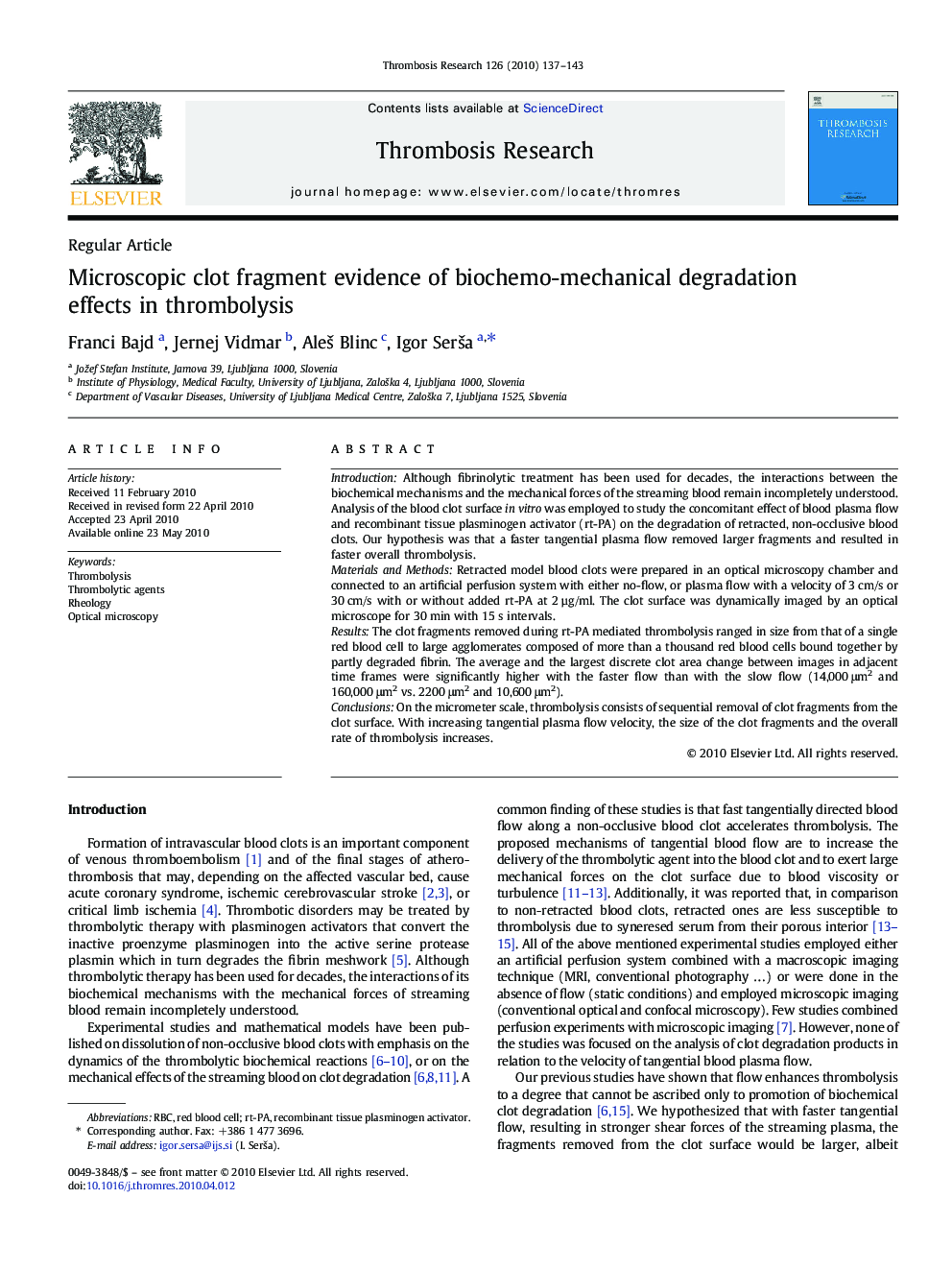| Article ID | Journal | Published Year | Pages | File Type |
|---|---|---|---|---|
| 6003098 | Thrombosis Research | 2010 | 7 Pages |
IntroductionAlthough fibrinolytic treatment has been used for decades, the interactions between the biochemical mechanisms and the mechanical forces of the streaming blood remain incompletely understood. Analysis of the blood clot surface in vitro was employed to study the concomitant effect of blood plasma flow and recombinant tissue plasminogen activator (rt-PA) on the degradation of retracted, non-occlusive blood clots. Our hypothesis was that a faster tangential plasma flow removed larger fragments and resulted in faster overall thrombolysis.Materials and MethodsRetracted model blood clots were prepared in an optical microscopy chamber and connected to an artificial perfusion system with either no-flow, or plasma flow with a velocity of 3 cm/s or 30 cm/s with or without added rt-PA at 2 µg/ml. The clot surface was dynamically imaged by an optical microscope for 30 min with 15 s intervals.ResultsThe clot fragments removed during rt-PA mediated thrombolysis ranged in size from that of a single red blood cell to large agglomerates composed of more than a thousand red blood cells bound together by partly degraded fibrin. The average and the largest discrete clot area change between images in adjacent time frames were significantly higher with the faster flow than with the slow flow (14,000 μm2 and 160,000 μm2 vs. 2200 μm2 and 10,600 μm2).ConclusionsOn the micrometer scale, thrombolysis consists of sequential removal of clot fragments from the clot surface. With increasing tangential plasma flow velocity, the size of the clot fragments and the overall rate of thrombolysis increases.
